Mixed Hardwood Flooring Design Ideas
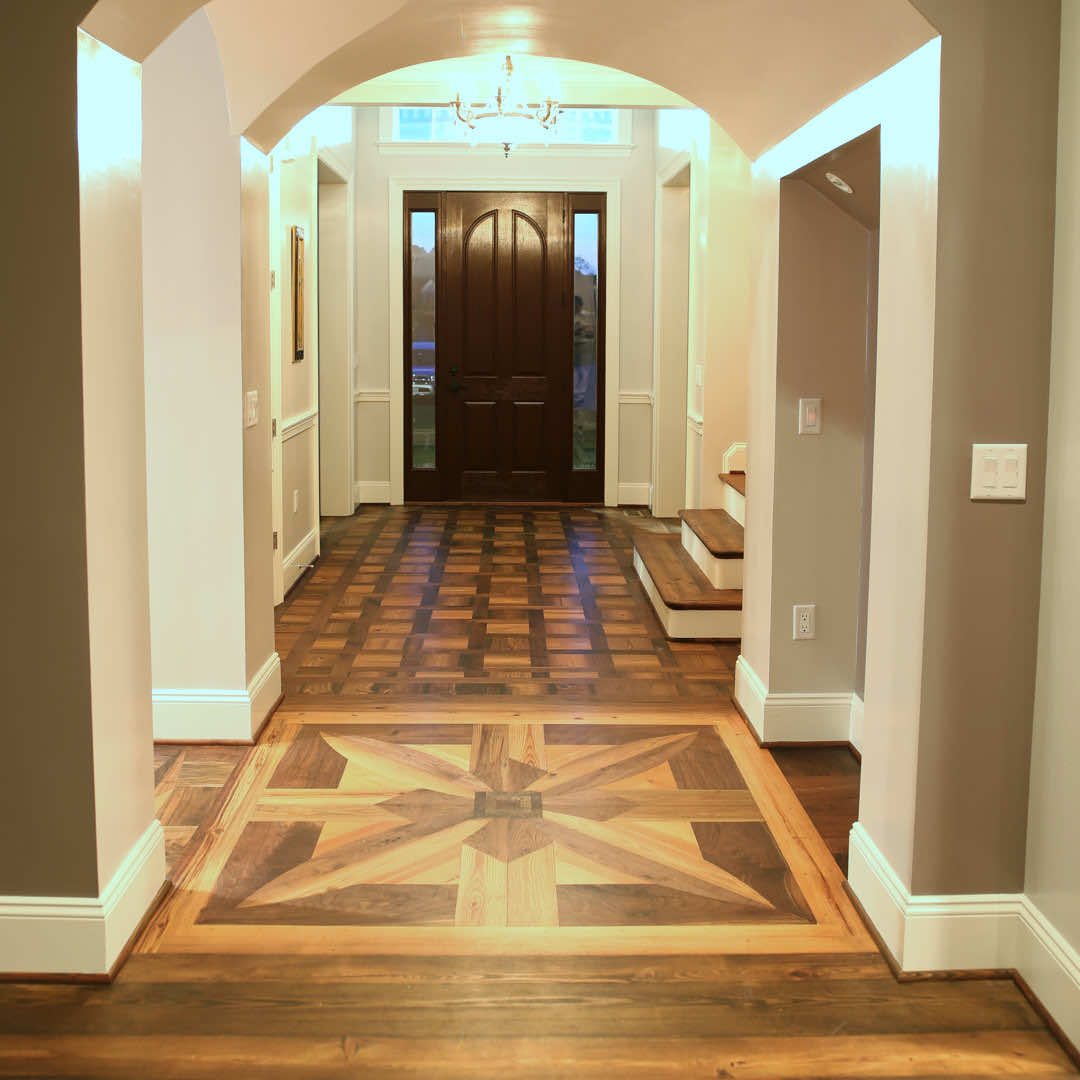
Mixed hardwood flooring can be an eye-catching addition to any space, providing movement and interest where a more consistent texture and tone might be overwhelming or dull. Choosing high-quality reclaimed or antique woods adds depth, texture, and unbeatable durability to the complex original story your mixed wood floor is telling.
Change It Up With Mixed Hardwood Flooring
Mixed hardwood flooring combines different species of woods, often in different widths or lengths to create a more eclectic or varied look than more evenly matched hardwood floors. While a perfectly matched, high-quality hardwood floor provides a timeless elegance of its own, choosing to mix your woods lets you create a nuanced look that is all you.
The original mixed wood floors probably came about when barn wood started being reused for the floors of farmhouses. Barns were typically constructed of whatever wood was available, so these floors could include a selection of local hardwoods from the forests of the eastern United States including elm, ash, beech, oak, and old-growth pine.
For this reason, many mixed wood floors, especially ones with lots of visible nail holes, knots, and wormholes tend to give a rustic feel to a space.
But because the original factories, warehouses, and mills that powered America’s industrialization have been turned into offices, studios, and exhibition spaces, the woods used in these buildings have been extensively reused. These heavy, darker hardwoods—often stained, scarred, or bearing circular saw marks—bring a vibrant, post-industrial buzz to the spaces.
Today, expert reclaimers and antique wood specialists like E.T. Moore provide customers with a huge range of quality reclaimed, antique, new, and exotic woods. These woods provide a rich pallet for anyone wanting to create a unique or eclectic floor all of their own.
Below we explain what mixed hardwood flooring is and why it’s a great choice for your living or working space. We also provide ideas and tips for designing a beautiful floor and then sourcing the right wood to make it a reality. Read on to learn more.
What Makes a Mixed Wood Floor?
A mixed wood floor is any floor that combines woods that are of different species or that have undergone weathering, staining, and treatment that makes individual boards significantly different from each other.
Many mixed wood floors also include boards of different widths or sizes, which adds to the sense of the “story” a mixed wood floor brings to a space, as well as adding interest to the eye.
Finally, they also include seemingly random elements including cracks, knots, staining, and nail holes. While many single wood floors include these elements, in mixed-wood floors they are used with more abandon to add to a sense of eclecticism rather than as a specific design element.
What Are Some Mixed Wood Flooring Design Trends?
Here are some of the most common techniques that are used to combine mixed woods into a coherent flooring pattern or design idea.
1. Herringbone Pattern
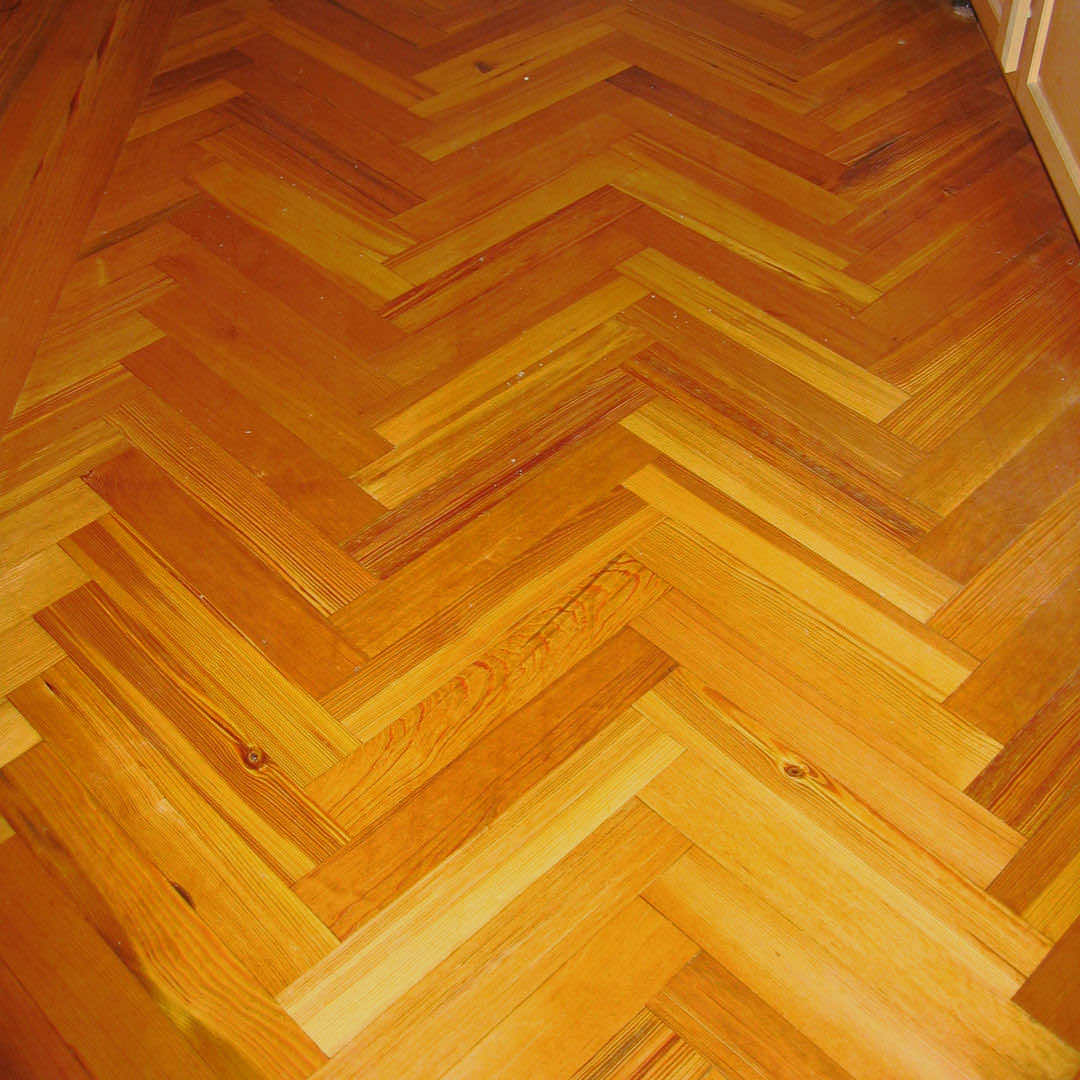
The herringbone pattern is a classic design that involves arranging rectangular planks at a 45-degree angle to create a zigzag pattern.
This design can be created with reclaimed wood flooring to add a touch of elegance and sophistication to any room.
2. Wide Plank Flooring
Wide plank flooring is a popular choice for those who want a rustic or farmhouse-style look.
Using reclaimed wood planks in varying widths can create a charming, textured effect that adds character and warmth to any space.
3. Random Width Pattern
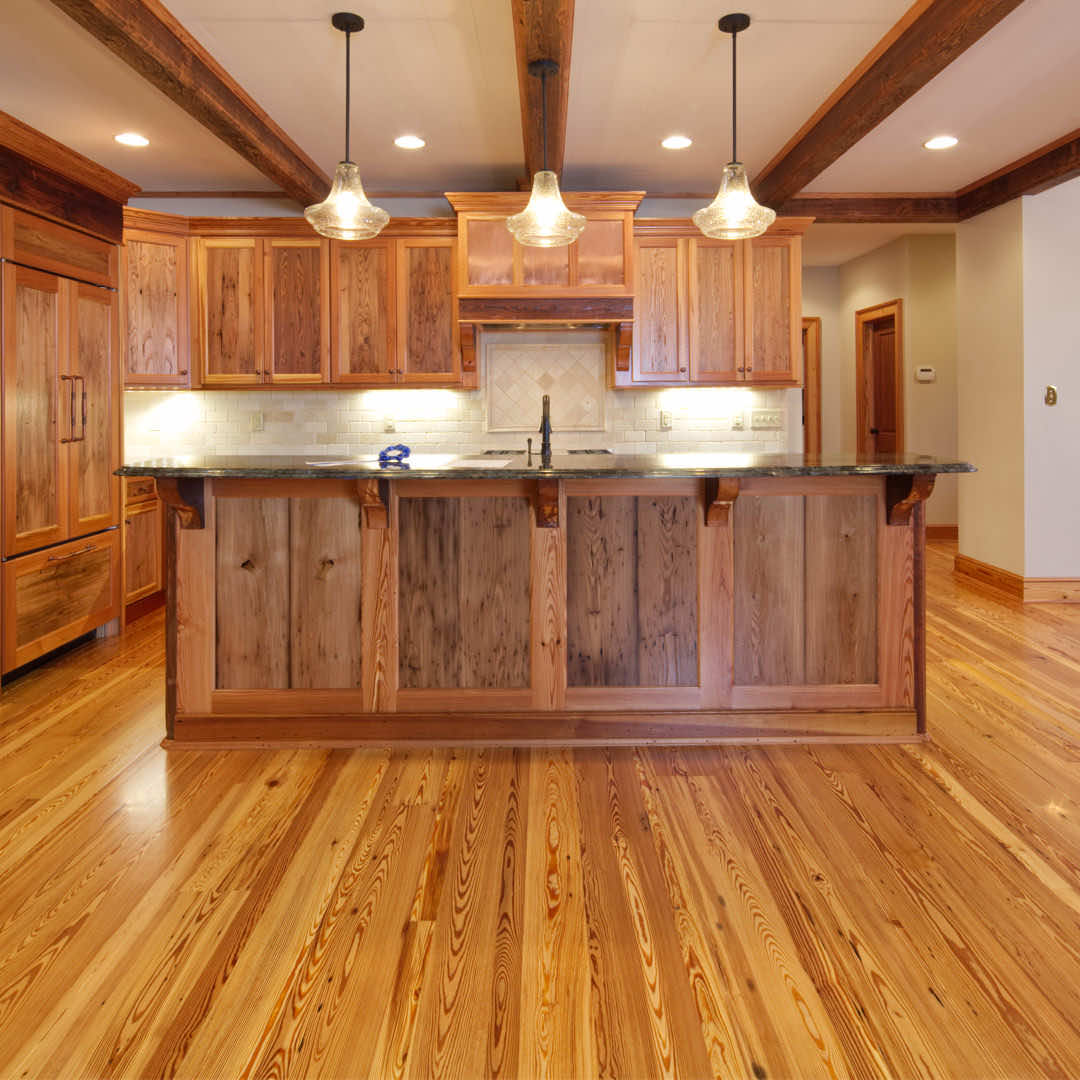
A random width pattern involves using reclaimed wood planks in varying widths to create a random, yet harmonious pattern.
This design can give a room a relaxed and casual feel, and it's a great option for those who want a floor that looks natural and organic.
4. Chevron
A chevron layout is similar to herringbone, but the planks are cut at a sharper angle to create a V-shape. This design is often used to create a modern and stylish look.
Eight Mixed Hardwood Floor Design Looks
The sky is the limit when it comes to combining color, texture, grain, and board size in a mixed hardwood floor. That said, it helps to start by looking at some classic looks that have stood the test of time.
1. Temperate Hardwoods
Double down on charm with a selection of warm-toned, old-world hardwoods including mahogany, cherry, and maple. The colors will complement one another while the distinct grain of each wood will set individual pieces apart. Keep things tight with consistent board width and length or let the wood tell its own story by using the sizes as they come.
Just remember, you may need a skilled carpenter to combine boards of different sizes when installing the floor.
2. Rustic Charm
Embrace the origins of mixed hardwood floors by choosing the inconsistent size and come-what-may wood mix associated with reclaimed barn wood. Look for warm tones and unique features like nail holes and saw marks.
Add color and consistency by combining lower-quality barn wood with genuine antique or distressed oak for a true farmhouse feel.
3. Coastal Escape
Bring a touch of the ocean inside with the muted tones of weathered unpainted woods in washed-out browns and grays. Create a driftwood shack feel by choosing wood of very different widths or lengths. Choose smooth, light-grained woods and avoid reclaimed or distressed materials. Reclaimed tidewater pine and cypress are perfect for this look.
4. Two-Tone Fusion
Jazz up your space with a mix of smooth dark woods and light-colored boards. Choose an exotic hardwood like teak or tigerwood and set it off with the clean Nordic lines of birch or ash. You’ll get a striking, contemporary look that will fill any space with energy.
5. New England Cottage
Combine dark oak or walnut with the honey-colored tones of maple for a sophisticated, versatile look that’s at home anywhere. Enjoy the contrast of the old country warmth of the oak and walnut with the brightness and open grain of the new world maple.
6. Understated Elegance
Add unfussy warmth to a room by combining different shades of natural oak. The similar grain will draw the floor together but the different shades of oak will make it pop. It’s simple, clean, and timelessly elegant.
7. In the Mix
Turn up the eclecticism by throwing together a seemingly random collection of hardwoods for a kind of controlled chaos. Enjoy the interplay of rich, dark hardwoods with clean, light-grained ones. The result is engaging, artistic, and endlessly fascinating.
8. Old School
Combine shades of antique, distressed oak, or reclaimed heart pine for a warm, worn, well-loved feel that will make anyone feel instantly at home. Your house doesn’t have to be old to be welcoming.
What Goes Into Designing a Mixed Hardwood Floor?
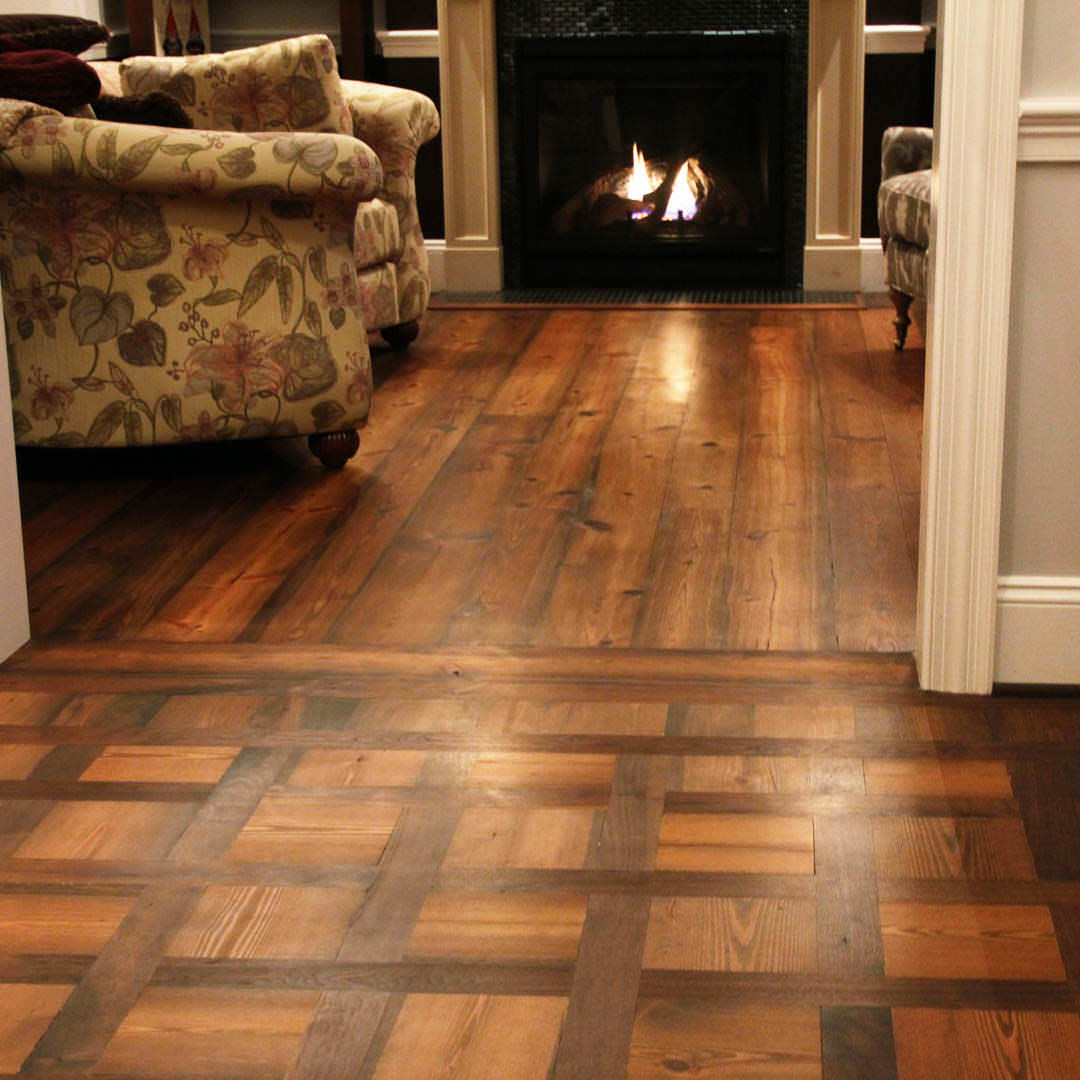
Mixed hardwood floors are always about contrast, eclecticism, and parallel stories, but unless randomness itself is the aim, there always needs to be a few guiding principles behind every great floor design. Here are some pointers to bear in mind as you consider options for your project.
1. High Key or Low Key?
First, ask yourself, do you want your floor to be understated and nuanced with subtle graduates of tone and texture or a standout study in contrast, with sharply different wood colors? If contrast is not your aim, do you want your floors to be lighter or darker?
Keep in mind that lighter woods will reflect light and darker woods will absorb it. Therefore lighter spaces seem larger and darker spaces smaller.
2. Choose Your Range
Now create your color range by picking out the lightest and darkest woods you will use in your design. Ideally, you should have an even spread of woods within this range, depending of course on how much contrast you want.
3. Keep Something the Same
Create a sense of coherence by choosing a feature that will bind your design together. This can be the color of your wood if you are creating a low-contrast design, or it can be consistent board width and size, or perhaps a similar grain or knot pattern between wood types.
4. Make Something Different
Increase interest by adding some randomness to your design. This could be boards of different widths or ones with unique cracks, nail holes, or saw marks. The more you add, the more eclectic your design will be. But beware: too much variability will affect the coherence of your design.
In short, a good mixed hardwood floor is a balancing act between coherence and contrast, between light and dark, and between randomness and consistency. Getting it right can be tricky, so consider working with a professional designer to help you realize your vision.
What’s the Best Wood for Mixed Hardwood Floors?
The best woods for mixed hardwood floors combine visual appeal with toughness and durability. Woods used for flooring need to be able to stand up to daily wear and tear including foot traffic, spills, and regular cleaning. They also need to be strong and stable enough to withstand temperature and humidity changes without warping or bending.
Slow-growing hardwoods are always a good choice for flooring. However, premium reclaimed heart pine, spruce, and cypress from America’s original old-growth forests are hard to beat. The strength and stability of these woods made them the ideal choice for structural beams, joists, and floorboards in mills, warehouses, and factories.
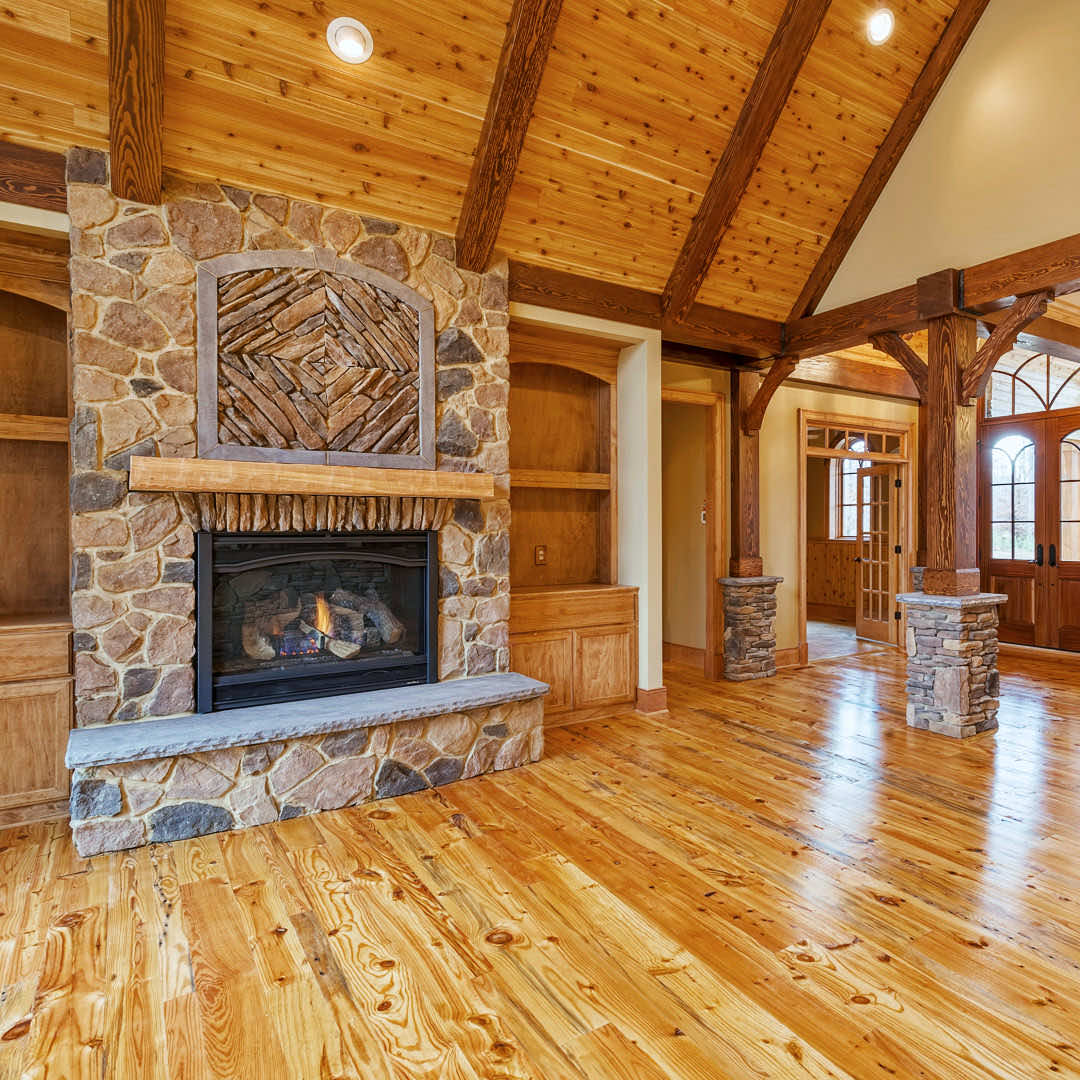
These ancient woods are also coveted for their rich natural beauty and the unique character each piece has developed over centuries of use. E.T. Moore salvages and remills vintage hardwoods into quality flooring that continues this long tradition of American craftsmanship.
While the supply of true old-growth heart pine and cypress is limited, reclaimed second-growth stocks of eastern white pine and other historic hardwoods like spruce, hemlock, and fir offer similar durability and a range of different hues and grains to add character to your flooring.
Sustainably grown supplies of red oak, cherry, and new-growth pine are less durable than true antique woods but offer beauty, character, and warmth at an affordable price. Like any quality hardwood, they will last for generations if maintained properly.
Make E.T. Moore Part of Your Reclaimed Wood Story
Whether you are seeking the timeless quality and sense of history of a genuine wide plank old-growth heart pine or you are looking for a selection of quality woods for a unique mixed hardwood floor, E.T. Moore has the quality reclaimed products you need.
As expert wood salvagers with more than 50 years of experience, we offer the largest selection of heart pine and other classic American hardwoods for your renovation or new build.
Our vintage wood products include:
- The widest selection of genuine reclaimed heart pine flooring
- Reclaimed eastern white pine and redwood
- Antique Eastern spruce, New England hemlock, and Douglas fir
- An extensive range of specialty and sustainable flooring options
At E.T. Moore, we offer the largest on-site inventory of premium quality reclaimed woods, stored at our five-acre site. All woods are graded and milled according to our own exacting standards. We can usually source and ship most orders within two weeks.
We are also experts at sourcing and matching hard-to-find woods and we can often supply orders in longer lengths and wider widths than other suppliers.
Talk to us about how we can help you make high-quality, historic reclaimed wood flooring part of your life today—and for generations to come.
Reclaimed Wood Flooring